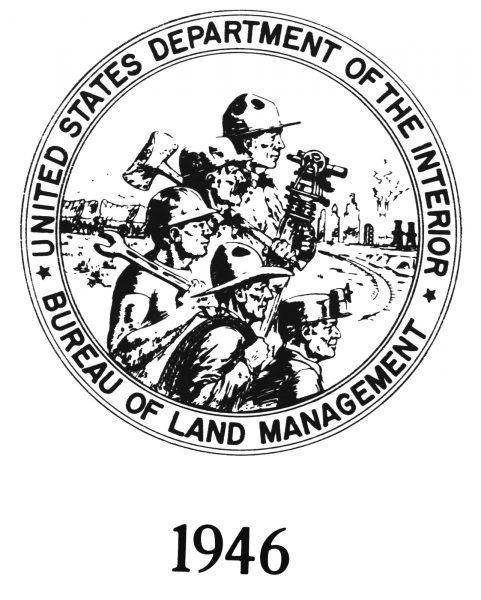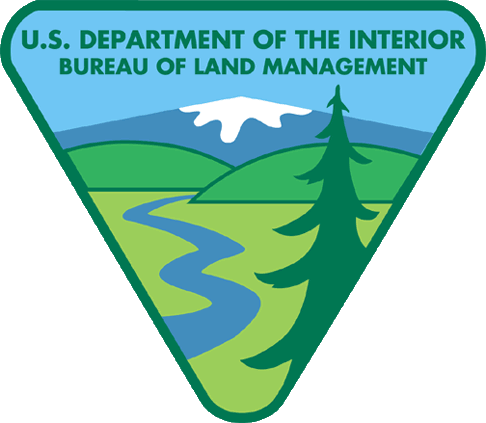Relocating the BLM
Republican Senator from Colorado, Cory Gardner, announced on July 15, 2019 that the Bureau of Land Management (BLM) will reorganize and move its headquarters from Washington DC to Grand Junction, CO.[1] The BLM’s headquarters have been based in Washington DC since the agency’s earliest years. This has allowed BLM staff to be active participants in developing public lands law and policy. The decision to move the BLM was extremely controversial. Many current and former members of the BLM’s staff have critiqued the move. However, it also has many proponents.[2] Considering the historic function of the BLM’s Washington office, the decision to relocate the agency’s headquarters to Grand Junction, Colorado likely represents an attempt to limit the BLM’s influence in decision-making at the national level.
Arguments “For” and “Against” the Move
People whose businesses are based on extractive uses of public lands, including ranchers and energy interests, are among the major proponents of the BLM reorganization because they believe it will give them more access to and possibly more influence over the people who have power over their businesses.[3] The Trump Administration believes this move will save tax payers $50 million by reducing travel costs, lowering salaries to match the reduced cost of living in areas like Grand Junction, and lowering the cost of office space.[4]
In contrast, the Public Lands Foundation, an organization comprised of retired public land managers, many of whom worked at the Bureau’s DC headquarters, believe that the move will make communication with decision makers more difficult. In a letter addressed to Secretary of the Interior David Bernhardt, the Public Lands Foundation wrote, “We believe this reorganization would functionally dismantle the BLM…”[5] While advocates for the move argue that the move is sensible because 99% of land the Bureau manages is located in the western half of the United States, about 95% of BLM staff already work in the field and only the 5% are located in Washington DC.[6] The proposed move to Grand Junction will scatter 300 headquarter positions across twelve states by September 2020.[7]

Photo courtesy of Kyle Sullivan, Wikimedia Commons.

The Bureau’s History
To understand the controversy accompanying the reorganization and move, one must look at the history of the BLM. Congress passed an act in in 1946 to establish the BLM by merging the U.S. Grazing Service and the General Land Office.[8] The BLM inherited the mandates of both agencies.[9] The U.S. Grazing Service oversaw and promoted grazing on public lands, and the General Land Office encouraged and managed the sale and settlement of public lands.[10] Not only did the lack of a single mandate make it difficult to manage the Bureau’s lands, so too did the lack of staff, leadership, and political power.[11] The BLM struggled to find its place in the Department of Interior. As it found its footing, it became increasingly important for the BLM to maintain both a strong presence across the American West as well as in Washington DC. By assigning staff to field offices around the country and in the nation’s capital, the BLM has been able to maintain adequate on the ground coverage within the communities they serve while also having a seat at the table in Washington DC.[12]
Historically, the BLM’s Washington DC office has played an important role in updating the bureau’s mandate in order to meet the changing needs of the American people. From 1946-1960 the main uses of BLM lands were mineral extraction, grazing, and some forestry.[13] The 1960s and 1970s brought a shift in the use of public land. By the 1970s, the public began making demands for the BLM to better account for recreation and conservation alongside extractive, industrial uses of its land. This cultural shift is reflected in the changes to the BLM’s logo (see images). Also, the BLM was increasingly in need of an organic act that provided the agency with a unified mandate. The National Park Service, by contrast, received their organic act in 1916 to establish the agency’s mission for conservation and to provide for the future enjoyment of people.[14] Finally, with help of the Bureau’s headquarter employees in Washington DC, such as associate director George Turcott, Congress passed the 1976 Federal Land Policy and Management Act (FLPMA) after a long and hard fight.[15] FLPMA repealed the Homestead Act, which allowed citizens to claim 160 acres of surveyed government land, and reversed the idea of land disposal by establishing a policy of retaining public land in federal ownership to be managed for sustained yield and multiple use.[16] FLPMA is just one example of the importance of the BLM’s headquarters in Washington DC.
What’s Ahead for the BLM
On September 20, 2019, the Bureau announced the new headquarters office will share its building with oil and gas companies such as Chevron, possibly to the advantage of extractive industry and the disadvantage of conservation and recreation interests.[17] Shortly after, on November 12, the Bureau issued management-directed geographic reassignment letters to 159 employees, giving them 30 days to accept relocation. Then, the employees who have accepted relocation will have 90 days to report to their new offices.[18] This shortened timeline will likely lead to qualified employees being pushed out of the Bureau; they can either get on board with the move or get out of the bureau.
As new information is released regarding the move, the motives behind moving the BLM headquarters away from Washington DC are becoming increasingly clear. The full impact of the BLM’s move to Grand Junction is still unknown, but the Bureau’s history reveals the importance of the agency maintaining its headquarters in Washington DC. Without its position in the nation’s capital and with its new proximity to corporate oil and gas giants, the move signals the Trump administration’s emphasis on extractive industry and cutting the BLM out of public lands decision-making at the national level.
-Hailey Doucette, PLHC Intern
Additional Links
Below is an interactive map of what activities are done where on BLM lands:
On December 11, 2019 the chair of the House Natural Resources Committee announced the BLM relocation was under investigation. Here is a link to further information regarding the inquiry:
Sources
[1] Caitlyn Kim and Stina Sieg, “Gardner Says BLM Will Indeed Move to Grand Junction, After Yearslong Campaign,” CPR News, July 15, 2019, Accessed November 12, 2019, https://www.cpr.org/2019/07/15/gardner-says-blm-will-indeed-move-to-grand-junction-after-yearslong-campaign/
[2] Associate Press, “Moving Bureau of Land Management to Grand Junction Brings Praise, Prompts Questions,” Fox News, July 16, 2019, Accessed November 11, 2019, https://kdvr.com/2019/07/16/moving-bureau-of-land-management-to-grand-junction-brings-praise-prompts-questions/
[3] Dan Elliot and Brady McCombs, “Trump Administration says Moving BLM to the West will Save Money, Improve Decisions,” The Colorado Sun, July 18, 2019, Accessed November 12, 2019, https://coloradosun.com/2019/07/18/blm-west-move-congress-interior-department-reason/
[4] Maxine Speierm, “Plans to Move the Bureau of Land Management Headquarters West Raise Questions,” Pacific Standard, July 18, 2019, Accessed November 18, 2019, https://psmag.com/news/plans-to-move-the-bureau-of-land-management-headquarters-west-raise-questions
[5] Edward W. Shepard to Richard Shelby, Patrick Leahy, Lisa Murkowski, Tom Udall, September 25, 2019, https://publicland.org/wp-content/uploads/2019/09/PLF-Ltr-to-Senate-Approps-Comm-BLM-Reorg-09-25-2019.pdf
[6] Juliet Eilperin and Lisa Rein, “Interior to move most of Bureau of Land Management’s D.C. Staff out West as Part of Larger Reorganization Push,” Washington Post, July 15, 2019, Accessed November 13, 2019, https://www.washingtonpost.com/climate-environment/2019/07/15/interior-move-one-fifth-bureau-land-managements-dc-staff-out-west-part-larger-reorganization-push/. And U.S. Department of the Interior, Bureau of Land Management, “Headquarters Move West,” Accessed November 11, 2019, https://www.blm.gov/office/national-office/hq-move-west
[7] Dan Elliot and Brady McCombs, “Trump Administration Says Moving BLM to the West Will Save Money, Improve Decision,” Colorado Sun, July 18, 2019, Accessed November 20, 2019, https://coloradosun.com/2019/07/18/blm-west-move-congress-interior-department-reason/
[8] U James Muhn and Hanson Stewart, “Opportunity and Challenge: The Story of the BLM,” U.S. Department of Interior, September 1988, Accessed December 4, 2019, https://www.nps.gov/parkhistory/online_books/blm/history/chap2.htm
[9] James Muhn and Hanson Stewart, The Story of the BLM, https://www.nps.gov/parkhistory/online_books/blm/history/chap2.htm
[10] Tyson Gillard, “Bureau of Land Management,” Outdoor Project, November 25, 2013, Accessed December 4, 2019, https://www.outdoorproject.com/articles/bureau-land-management
[11] James R. Skillen, The Nation’s Largest Landlord, (Kansas: University of Kansas Press, 2019), 20.
[12] Jesse Prentice Dunn, “Breaking Up the Bureau of Land Management Headquarters,” Westwise, July 19, 2019, Accessed November 18, 2019, https://medium.com/westwise/breaking-up-the-bureau-of-land-management-headquarters-6f94c107a54d
[13] “America’s Public Lands: Origins, Future, History,” Public Lands Foundation, Accessed November 11, 2019, https://publicland.org/wp-content/uploads/2016/08/150359_Public_Lands_Document_web.pdf
[14] Department of Interior, National Park Service, “Organic Act of 1916,” February 5, 2017, Accessed November 20,2019, https://www.nps.gov/grba/learn/management/organic-act-of-1916.htm
[15] James Muhn and Hanson Stuart, The Story of the BLM, https://www.nps.gov/parkhistory/online_books/blm/history/chap4.htm
[16] U.S. Department of the Interior, Bureau of Land Management, “History of the BLM,” Accessed November 11, 2019, https://www.blm.gov/about/history/timeline
[17] Chuck Murphy and Caitlyn Kim, “The BLM Just Announced its Grand Junction Address. It Shares the Building with Oil and Gas Companies,” CPR News, September 20, 2019, Accessed November 20, 2019, https://www.cpr.org/2019/09/20/the-blm-just-announced-its-grand-junction-address-it-shares-the-building-with-several-oil-and-gas-companies/
[18] Nicole Ogrysko, “BLM Issues Reassignment Notices to 159 Employees as Part of Western Relocation,’ Federal News Network, November 12, 2019, Accessed November 20, 2019, https://federalnewsnetwork.com/workforce/2019/11/blm-issues-reassignment-notices-to-159-employees-as-part-of-western-relocation/